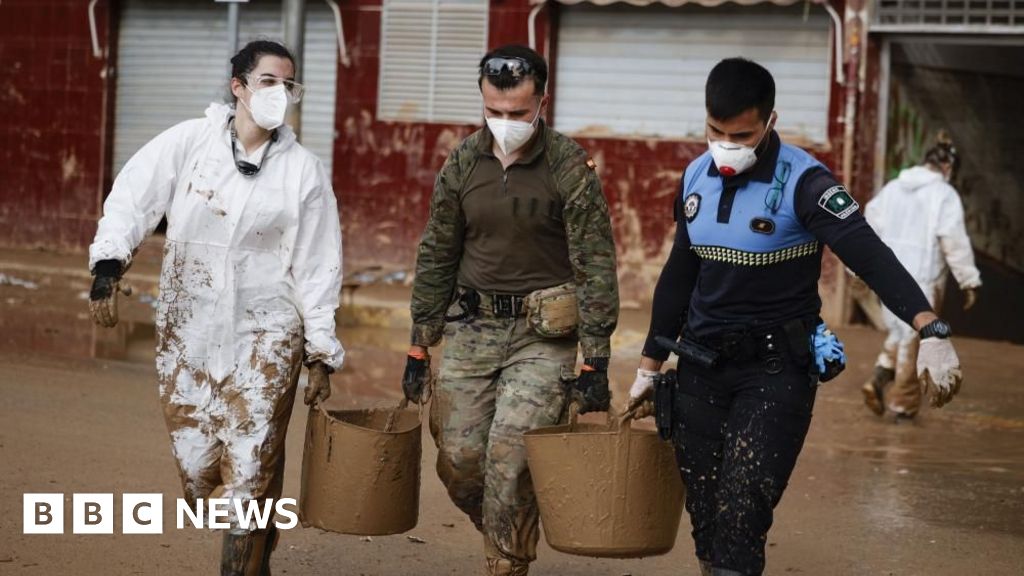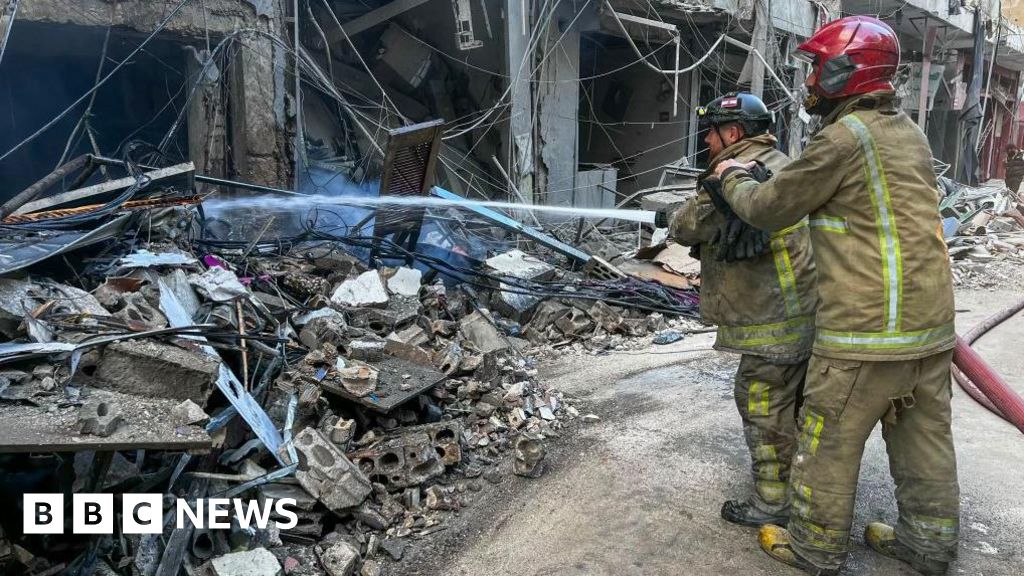ARTICLE AD BOX
By Michael Dempsey
Technology of Business reporter
Image source, Getty Images
Image caption, 72 people died in the Grenfell Tower disaster in LondonInsurance is not a subject to set the pulses racing. But Anthony Peake is passionate about it.
He is driven by anger at the Grenfell Tower fire, which killed 72 people in June 2017 in London.
The insurance industry collects a lot of data about individual buildings and Mr Peake argues that if this were better organised and analysed then tragedies like Grenfell might be avoided.
"The data was there that could have prevented it but it was not being managed correctly. I felt I could either scream about it, or I could do something to prevent it happening again," he says.
Mr Peake also thinks the Beirut port explosion in 2020 and the 2021 condominium collapse in Miami, Florida could also have been averted, with better technology.
His company, Intelligent AI, was founded in Exeter in 2020. Its big idea is to create a mirror image of a building incorporating multiple data sources, known as a digital twin. This can be assembled and analysed by artificial intelligence (AI).
Large commercial insurance policies are often surprisingly lacking in detail, says Mr Peake. "We're expected to give lots of details when we buy house insurance but the bigger the policy the more latitude the insurer has.
"And insurance is very analogue, it's a world of 60-page reports and huge spreadsheets with manual entry."
Image source, Anthony Peake
Image caption, Anthony Peake wants insurance data to be better organised and analysedThe pandemic, with its flood of business insurance claims, triggered a willingness to investigate new techniques in this traditional world. Global warming and a rise in catastrophic natural events has piled on the pressure and insurers now realise they need better information.
Lloyd's of London, the insurance market that brings agents, brokers and underwriters together, has trialled this thinking in its new digital lab where the race is on to improve the quality of data on which to base premiums.
Ed Gaze is a former mechanical engineer who found that his critical eye for safe systems in the oil and gas industries was needed at Lloyd's. A detour into data analytics saw him running Lloyd's Lab, the market's own digital innovation hub.
"The idea of using technology to revolutionise a 330-year-old market is really cool," he says.
He sees the potential in digital twins. "We definitely don't have a perfect view of what's going on behind the scenes at many insurance customers, so bringing different data sources together in the one place and interrogating them to understand the client better does make sense."
However Mr Gaze assumes the insurance broker's caution as he draws a line around what AI can accomplish. "This looks like it's got potential, but it all depends on how good the data they have is. There's only so much AI can do."
Image source, Jason Alden
Image caption, Artificial intelligence is only as good as the data it is trained on, says Ed GazeMr Peake has shared his vision of AI-powered insurance assessments with Lloyd's Lab. He says that insurance companies covering residents of Grenfell Tower were unable to see a complete picture of the fire danger there.
For example fire service reports of call-outs to minor incidents weren't easily available to insurers.
"The whole point of a digital twin is that you can identify council data about fire doors not closing properly. Yes, it might help insurers to save money, but ultimately it's about making sure people don't get killed because data was available but not used."
Satellites loom large in Mr Peake's world. "I can deliver updates from Nasa, the EU Copernicus programme and commercial imaging satellites."
Image source, Getty Images
Image caption, 98 people died in June when Champlain Towers South in Florida collapsedIn the case of the Miami apartment block collapse, satellite pictures can be compared and added to a back catalogue of internal building reports to reveal tell-tale evidence of water damage that had been eroding internal structures over the years.
While a final verdict on what triggered this disaster has yet to appear, Mr Peake has already run his digital magnifying glass over publicly-available information.
"Looking at the Florida disaster I could find local council engineering reports and see details about how concrete slabs had been collecting water. Pooled water inside a structure damages it just like external weather."
Likewise the Beirut port explosion followed a host of red flags. These, such as accounts of what was stored in the fated warehouse, could be found via open sources.
Mr Peake's company has trained an AI programme to analyse insurers' reports.
The software learns, by repetitive viewing of terms in reports, that "sprinkler" and "water pressure" belong to the same category of information. The language processing capability of AI means that "refuse", "bins" and "rubbish" are gathered together to highlight a fire hazard.
At the commercial arm of French insurance giant Axa, Andreas MacFarlane works on improving the way the business operates. He also participates in the Lloyd's Lab initiative and has studied Intelligent AI's digital twins approach.
"I try to shape the way we view all insurance risk, and digital twins let you look into the past and see if a trend is developing" says Mr MacFarlane, emphasising that AI offers the only way to exploit this model. "We need to make sense of an ocean of data and that means we have to apply AI."
Lloyd's Lab is where tech dreams meet the hard realities of the insurance business. But the digital twin could mean that insurers are on the brink of peering into the near future and spotting disastrous events before they unfold with tragic human consequences.

 3 years ago
51
3 years ago
51








 English (US)
English (US)